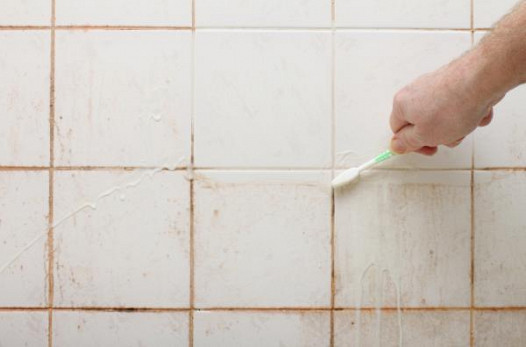How do you feel with regards to How to Prevent Bathroom Water Damage?

The shower room is incredibly vulnerable for wet accumulation and possible water damage due to the constant use water in it. This short article offers straightforward assessment techniques to aid finding water damage hazards.
The constant use of water in the bathroom makes it exceptionally prone for moist buildup as well as potential water damages. By examining it regularly, you can minimize water associated problems.
The complying with set of assessments is easy to do and must be done once in every 3 months in order to keep your washroom in good shape and also to prevent possible water damages brought on by the tub, the shower, pipeline joints as well as plumbing, sinks, closets, as well as the commode
Do not overlook performing these assessments and be complete while performing them. Bear in mind that these simple assessments can save you a great deal of cash by offering very early indications for water damages
Bathtub as well as Shower
The shower and also tub call for special interest and maintenance. Examine the tiles as well as change if broken. See to it that there is no missing grout in between the tiles. Check and also replace split caulking at joints where the wall surfaces meet the flooring or the bath tub. Clogged drains pipes and also pipes issues will certainly prevent the tub from drying out and may suggest significant problems below the bath tub. Consult with a professional quickly to prevent structural damages. Take notice of discolorations or soft areas around the tub wall surfaces as they might indicate an internal leak.
Plumbing
Signs for water damages are tough to detect because a lot of pipelines are mounted inside the walls.
Pay special interest to floor covering as well as wall surfaces dampness and stains as they may suggest an undetectable plumbing trouble. Examine moisture levels in adjoining rooms also.
Sinks as well as Cabinets
Sinks as well as closets are revealed to dampness and also moisture daily and are frequently neglected. Examine frequently under the sink and also on the kitchen counter over it. Fix any kind of drip in the catch as it might recommend drainpipe issues. Browse the sink, slow-moving draining pipelines might suggest an obstructed drainpipe. Change sink seals if they are split or loose.
The Bathroom
The bathroom is a susceptible water junction. Check the water lines and look for leakages around the commode seat, in the pipe, as well as under the water storage tank. If you discover any type of indications of moisture on the floor around the toilet, look for leakages in the toilet edge as well as storage tank seals.
Understand that hanging toilet bowl antiperspirants raises the opportunities for blockages.
10 TIPS TO PREVENT WATER DAMAGE IN THE BATHROOM
The average household uses approximately 80-100 gallons of water per person per day. For a family of 4, that's almost 2,500 gallons of water a week! The largest portion of this consumption comes from bathroom use. Flushing the toilet uses the most water, followed by taking a shower or bath. With that much water running through the home, water damage in the bathroom is bound to happen. Knowing how to spot signs of a water leak is essential to preventing long-term damage. This guide provides you with tips to reduce the impact of water damage on your bathroom.
CAUSES OF BATHROOM WATER DAMAGE
Pipe breaks are the most common cause of water damage we see in our daily jobs. The age of a pipe plays a large role in a pipe break as well as corrosion. Over time, the metal begins to break down, allowing water to escape. Frozen pipe breaks are also a concern in the winter months. Toilet overflows caused by paper products or children flushing inappropriate items. Degraded caulking around the toilet or bathtub can allow water seepage, sometimes behind the fixture, into the subfloor or walls. Condensation forms when the water in a pipe is cooler than the air temperature. Beads of water form on the exterior of the pipes, sometimes so much so that the water begins to drip and pool below. Sink or shower backups created by poor drainage. HOW TO PREVENT WATER DAMAGE IN YOUR BATHROOM
Inspect your toilet supply line for worn or frayed hoses and replace them as needed. Winterize your plumbing to prevent a frozen pipe break. Use vent fans to prevent condensation that can lead to mold growth. Routinely check and replace degraded caulking around your toilet or bathtub. Increase the temperature in your toilet tank and insulate your pipes during the warm summer months to keep condensation from forming. Use child safety locks on the toilets. Flush only toilet paper. "Flushable" wet wipes are actually not good for your plumbing system. Additionally, feminine hygiene products should not be flushed. Prevent water from escaping the tub or shower. Make sure shower curtains are in good condition. Inspect shower doors and replace the seal strip if necessary. Wipe up any water that accumulates on the floor and use bath mats. Water left to sit can cause damage to the tiles and flooring. Refrain from using bath products containing heavy oils to avoid a clogged drain.

We had been shown that write-up about Preventing Water Damage in the Bathroom from a good friend on our other blog. For those who liked our blog entry plz do not forget to pass it around. I value reading our article about How to Fix a Water Damage Bathroom.
Schedule Today